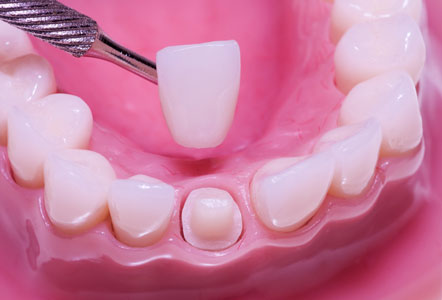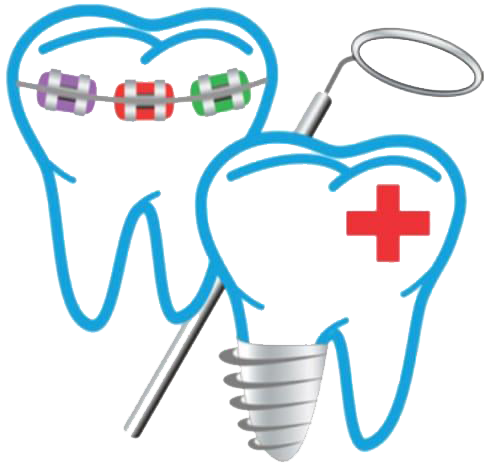Services
- Painless Extraction
- Smile Design
- Smile Correction
- Implants
- Zirconia Crowns
- Cosmetic Dentistry
- Veneers
- Tooth Jewelry
- Orthodontic Treatment
- Scaling
- Habit Breaking Appliances
- Cosmetic Light Cure Filling
- Imported Complete Denture
- Root Canal Treatment
- Bleaching Tooth Whitening
- Treatment of Pyorrhoea & Bleeding Gums
- Fix Crown & Bridge Metal Free in Porcelain All Ceramic Zirconia.
- Removable Partial Denture
- Treatment Under Fully Sterilized Coditions
What Is a Zirconia Crown?

Zirconia is a metal classified as a member of the titanium family and is mined around the world. It is found in dinnerware and electrical fixtures among other products. It's known for its durability, making it an ideal product to use in dental crowns, especially posterior crowns that require a lot of strength for chewing and grinding food, notes a study published by The Open Dentistry Journal.
The metal has become popular as a crown material, since it is supplied to dental offices in the form of a block, which is then milled by a computerized cutting machine (CAD CAM) into the shape of a tooth. Then, once it is fitted, it is cemented in the patient's mouth. Since that whole process can be accomplished in one dental appointment, it has become widely used by dentists, since patients can have a crown shaped and cemented in much less time than the traditional porcelain crown, which may take a few weeks to manufacture, and requires a cementation visit in addition to the initial visit.
What Are the Advantages and Disadvantages?
Many dental offices may charge less for a zirconia crown as opposed to a porcelain crown, since it does not have to be outsourced to an outside dental lab. Additionally, with today's hectic pace of living, many patients prefer the one appointment for its convenience, since it means less time out of work. The crowns can be easily adjusted by the dentist chairside on that day and cemented once the fit is perfect for the patient.
Zirconia as a material is not as translucent (allowing light) as porcelain crowns, so patients may not like the appearance of them, says Dental Economics. Advancements are being made to improve the color and look of zirconia crowns, so in the future, the appearance may be a non-issue. One of the best qualities of zirconia is its strength. The adjustment process on the day of the crown fitting in some instances can take a little longer that traditional porcelain crowns, but the sophistication of new milling machines streamline that process, according to Dentistry Today.
Solid or Layered Zirconia?
Solid zirconia or “monolithic zirconia” has a natural translucency and opalescence but due this trait, it is generally recommended for posterior crowns. This material is also particularly suitable for people who may grind their teeth because of its high strength. Only minimal clearance is required and there is low wear on opposing teeth. Solid zirconia is also very effective for masking highly discolored dental preps, specifically those that have darkened due to previous dental treatments, such as a post and core or a restored dental implant.
Layered zirconia is more translucent and opalescent, but unlike solid zirconia, it is especially suitable for anterior crowns. Although generally used for anterior crowns, layered zirconia may also be used for posterior crowns if there is sufficient clearance from other teeth. When done skillfully,
Zirconia HTZirconia HT
Zirconia HT (High Translucent) , at 590-720 MPa, is much stronger than porcelain-fused-to-metal (PFM) restorations and maintains a natural and vibrant translucency.
The product is 100% metal-free, a feature that prevents gingival darkening and removes the possibility of exposing metallic margins if gum recession begins. They are naturally esthetic, transmit the color of adjacent teeth, and can be matched to any shade.
